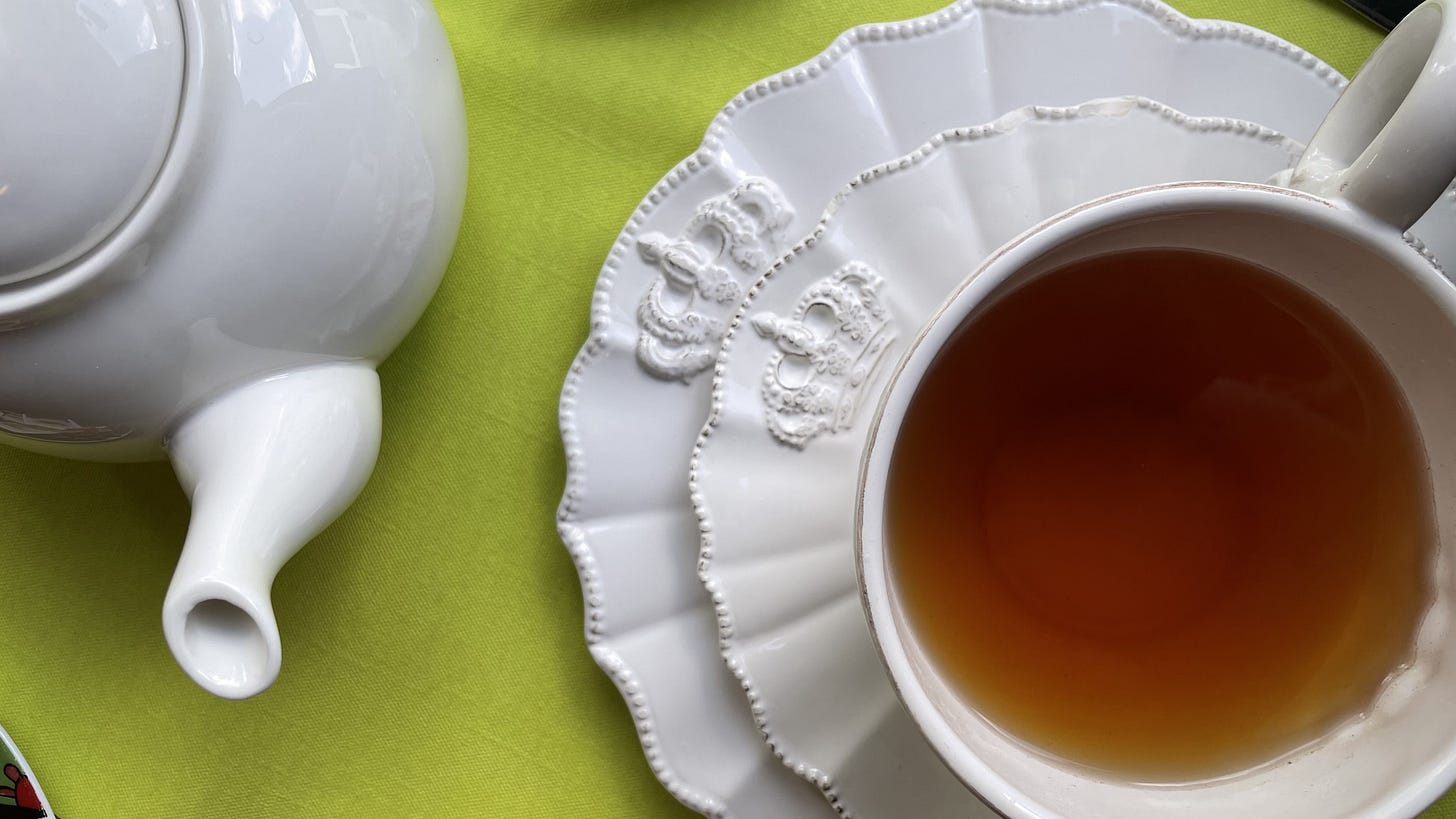An ode to tea
I can’t remember a time in my life when tea wasn’t there. It’s been a quiet constant, sometimes just a background habit, other times a deliberate ritual. It has marked moments of comfort, connection, and even loss. My relationship with tea isn’t steeped in tradition or ceremony, but it has shaped my days in ways I never fully recognised until I started looking back. Tea has been a companion, a rhythm, a way to slow down and make space for something more.
My earliest memory of tea takes me back to my grandparents’ house. They would always make us Tetley tea with lots of sugar and lots of milk, and to this day, I still go back to that combination when nostalgia pulls me in. It’s a comforting taste, a reminder of childhood and warmth.
But beyond that early memory, tea has never been something deeply symbolic to me—it’s more of a ritual, something woven into my daily life. Sometimes, it becomes a habit, especially when I have limits on how I can boil my water. I own a gooseneck kettle, and when I have access to a stove that doesn’t use an absurd amount of electricity, making tea becomes an experience rather than just a routine.
Whenever I make loose leaf tea, I always brew it three times. The first steep is groggy, underdeveloped, but still undeniably tea. The second steep is the best—full-bodied, malty, flavorful, perfect. The third steep? Well, it’s mostly to make sure the leaves don’t go to waste. It’s still tea, but the magic is in that second brew.
One of my strongest tea-related memories comes from pastry school, where a close friend, Ksenia, and I made it a tradition to have afternoon tea every Thursday. If we had morning classes, we’d go to the city centre, browse the market, pick up a few things, and then head to my place for tea. If we had afternoon classes, we’d do the same, just with a morning market run, lunch, and tea before heading to school.
That ritual wasn’t just about the tea. It was about slowing down, savouring the moment, and building a friendship that would last. That simple act of setting aside time for tea strengthened our bond.
Tea has also been a quiet companion through some of the hardest moments in my life. When my grandfather and my aunt passed away, I turned to certain teas to feel connected to them.
My aunt had loved a tea I introduced her to—one of my favourites from Murchie’s in British Columbia—so I found myself drinking it often after she passed. And when my grandfather passed, I made masala chai or the milk tea from my childhood. It was a way to remember, to sit with the memories, to process loss in a way that felt natural.
The way people treat tea changes depending on where you are, and I’ve definitely noticed those differences over time. In North America, people tend to see tea as either an afterthought or a poor substitute for coffee. They don’t seem to appreciate that tea isn’t a replacement—it’s an entirely different experience.
Indian people, whether in North America or Eastern Europe, tend to have a much deeper appreciation for tea. It’s part of the culture, ingrained in daily life. I’ve also noticed that the Netherlands has a strong tea culture—high tea and afternoon tea are common, and tea is just a normal, expected part of life rather than something niche or secondary.
One of the most meaningful tea experiences I’ve had was actually in the Netherlands. I visited my pen pal, Laura, and we had afternoon tea at a café called Downey’s—I can’t remember if it was in Utrecht or Amersfoort, but the place itself left a lasting impression. All the staff had Down syndrome, and the café provided them with an opportunity to work, engage with the community, and gain independence. That afternoon tea wasn’t just about the food or the tea—it was about the environment, the atmosphere, and the feeling of being part of something special.
Right now, tea is more of a habit for me than a ritual, but when I have the right setup, it becomes something much more deliberate. The difference between just pouring boiling water into a cup and carefully using a gooseneck kettle is huge. The latter forces you to slow down. You have to take in the scents, the motions, the emotions. It’s not just plopping tea into a mug—it’s an act of intention.
Of course, sometimes I switch things up. Right now, I have some really nice Sri Lankan black teas and a malty oolong that I’ve been drinking more often. But I always come back to black tea—I’ve never liked green tea or anything else. A strong, malty black tea is where my heart is.
At its core, tea has a way of creating moments—moments of connection, moments of reflection, moments of comfort. Even though I haven’t had many friendships where tea played a deep role in strengthening the bond, I’ve enjoyed introducing friends to real tea, explaining the difference between true tea and herbal infusions, and watching them gain a new appreciation for it.
There’s something about tea that slows life down, that makes space for conversation, that turns simple interactions into something a little more meaningful. Whether it’s an afternoon tradition with a close friend, a way to remember lost loved ones, or simply the comforting rhythm of daily cups, tea has quietly shaped my life in ways I never fully realised—one steep at a time.
Happy adventuring,
Ahmed
If you made it this far, fill out this form!


